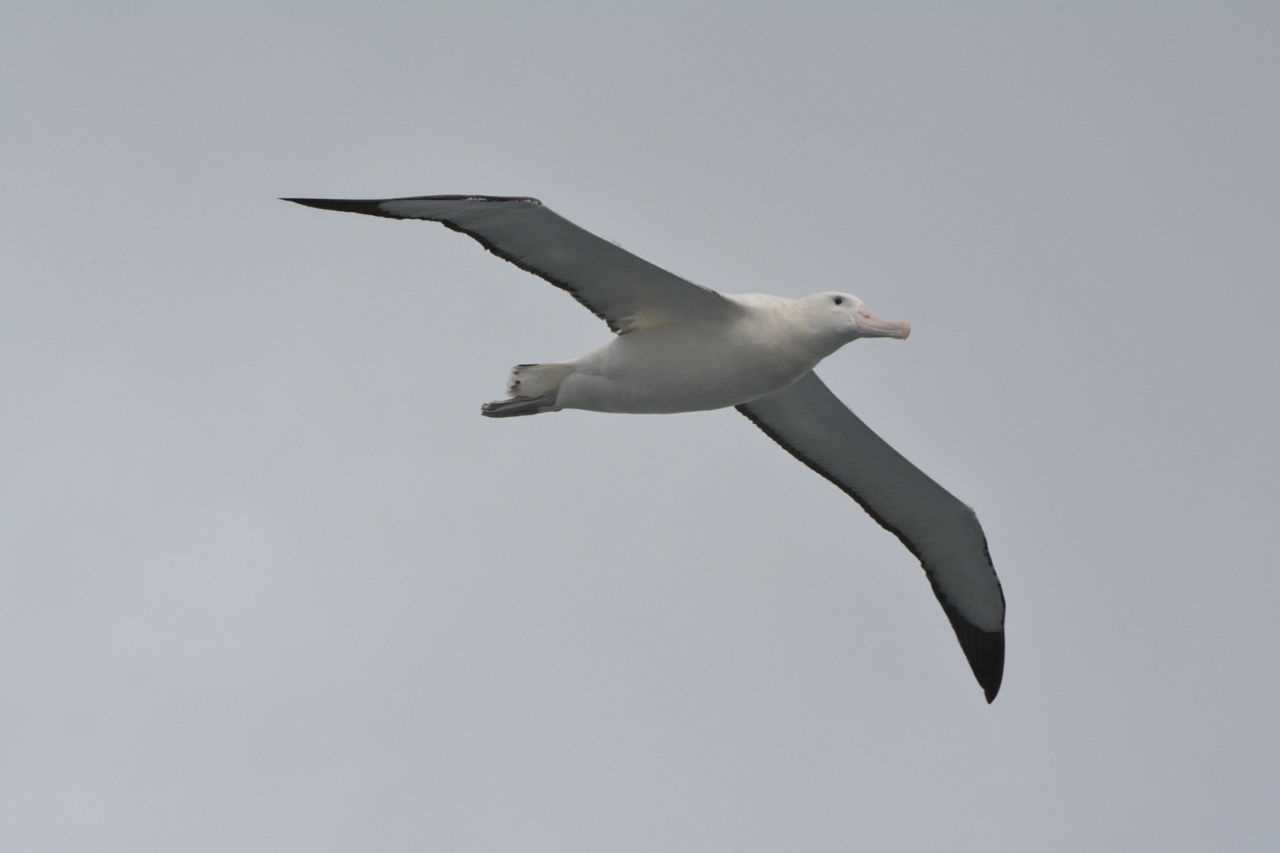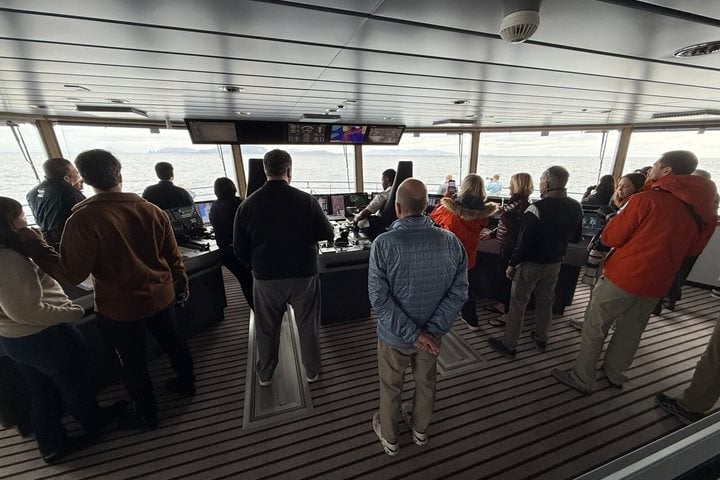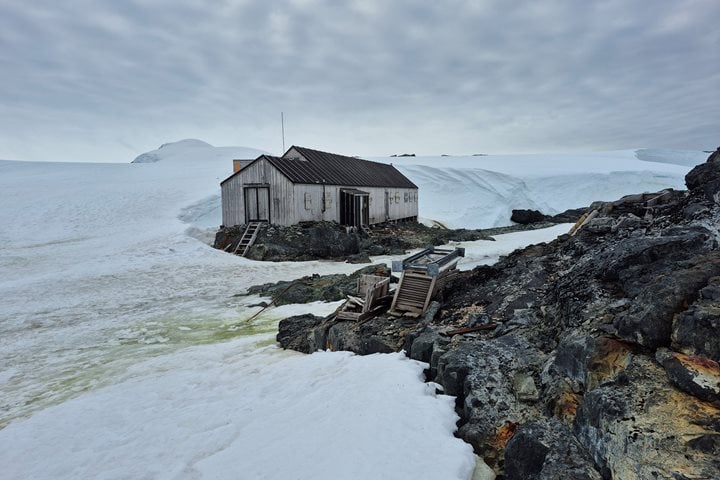We awoke this morning feeling the gentle swell of the Drake Passage. For some of us, the subtle swaying of National Geographic Orion produced a most restful sleep. The relatively calm waters were a result of, not the wind itself, but rather the direction from which the wind was coming. The unusual southerly wind was coming from the stern, and National Geographic Orion is wonderfully stable in these tailwind conditions. When strong westerly winds do return, the swells will strengthen and the Drake will regain its well-known and typical characteristics. Whether we experience the true Drake Passage on our return in a week is just a question whose answer is “blowin’ in the wind.”
We embarked the ship yesterday afternoon in Ushuaia and set off into the beautiful Beagle Channel at 7 PM in sunny, warm (for Ushuaia) weather with guests outside. As we cruised south towards the open ocean, the setting sun gave rich colors to the many cloud formations surrounding the boat.
The Drake Passage is full of seabirds, and they didn’t disappoint today. Birds we saw circling forward and back around and over the Orion included wandering and black-browed albatrosses, southern giant, white-chinned, Wilson’s storm, blue, and cape petrels, and Antarctic prions.
Shortly after lunch, we quietly slipped south across the Antarctic Convergence or polar front as the temperature of the Southern Ocean changed from a toasty 5°C at noon to 1.2°C at 4 PM. The Convergence is the boundary where northward-moving, cold Antarctic water meets southward-flowing, warm sub-Antarctic water from the Atlantic, Pacific, and Indian Oceans. We also noticed the decrease in air temperature as we crossed the boundary that separates cold polar air on the south and the warm tropical air to the north. Encountering the colder air started preparing us for the true Antarctic weather conditions that will be upon us very soon, and we all started to remember that we needed to find our long underwear, hats, and warm layers.







